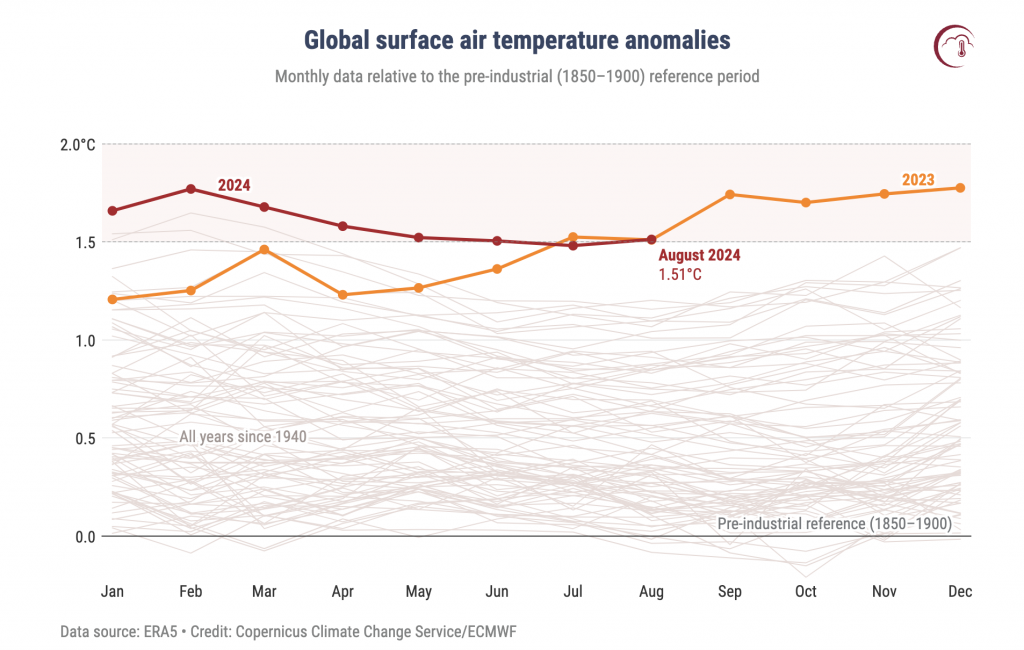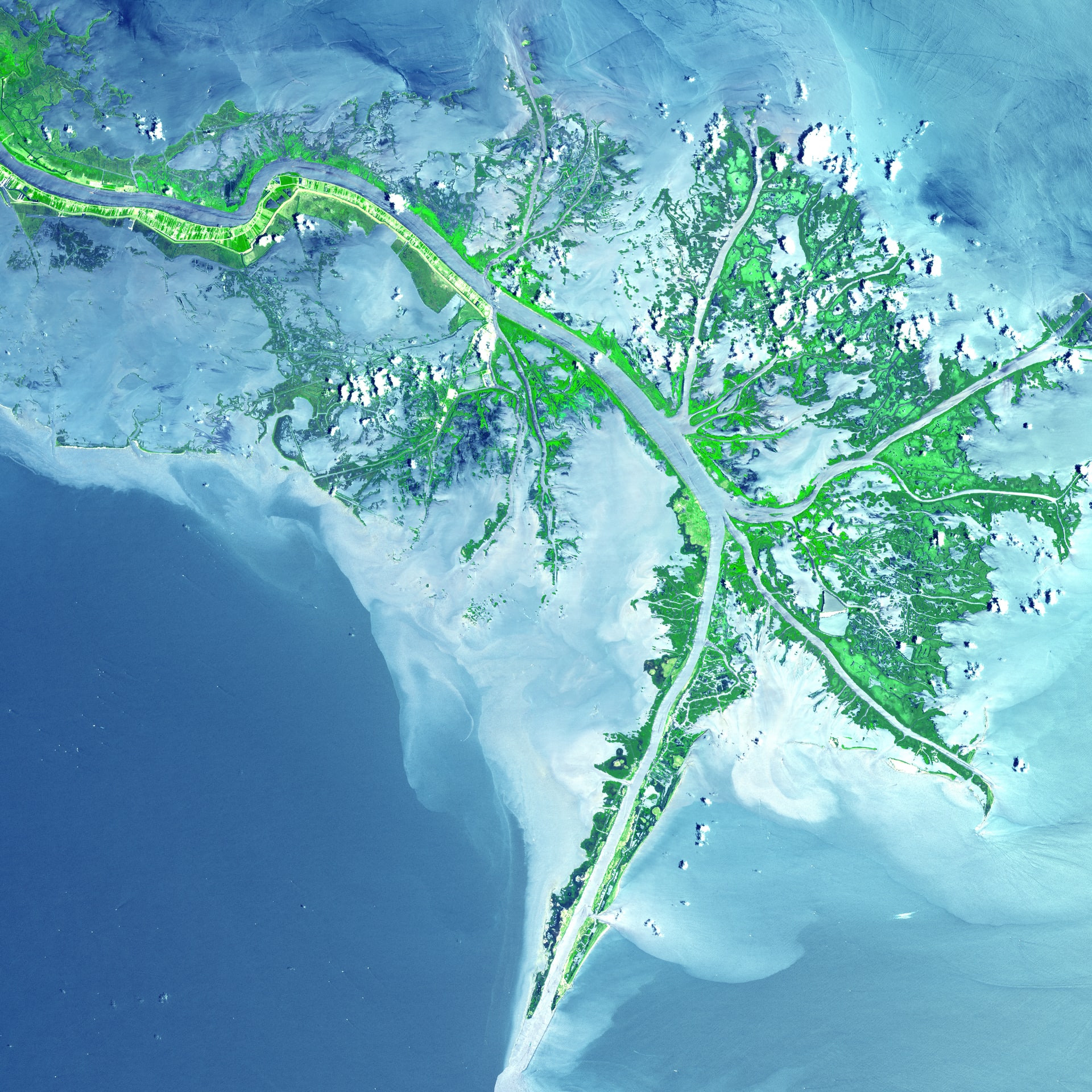“The data is saying what we have felt on our skin for the past few summers,” says CMCC researcher Giulia Bonino, as another record breaking summer in the Mediterranean unwinds. A summer that has left many wondering whether extreme weather events in the Mediterranean are simply the new normal.
“On July 20, 2024, marine temperatures reached anomalies of 6°C due to a marine heatwave,” says Bonino, whose recent CMCC webinar centered on unraveling the challenges associated with studying these extreme events. “Since the early 1980s, the Mediterranean Sea has been warming at approximately 0.4°C per decade, which is faster than the global ocean average. This warming is leading to more frequent and severe marine heatwaves, especially in the last 20 years.”
Bonino’s research focuses on investigating both the increased frequency and intensity of marine heatwaves in the Mediterranean and the challenges associated with understanding their underlying drivers, forecasting their future occurrences and assessing their impacts.

Rising marine temperatures are a critical issue as they come with wide-ranging ecological and socioeconomic impacts. As this correlation has become increasingly clear, there has been a growing interest in studying the impacts of climate change on marine environments so that we can better prepare for future changes.
From a scientific perspective, this involves, among other things, developing the know-how and technology to run models that quantify and forecast marine ecosystem impacts. An effort that is embodied in the EU funded project, of which CMCC is a partner, called ACTNOW, which develops solutions to halt the loss of biodiversity, restore and protect habitats and ecosystem processes, and safeguard the contributions of marine areas to human well-being.
Yet marine heatwaves are not the only extreme event affecting the Mediterranean region and they are better understood as a symptom of a larger trend. Natural disasters, such as wildfires, cyclones and flooding are also changing in both frequency and intensity with profound consequences.
A recent study, published in the journal Scientific Reports, looks at the co-occurring interplay between atmospheric heatwaves and droughts in southern Europe, and marine heatwaves in the East Atlantic and the Mediterranean Sea, between 2001 and 2022. The results of the study reveal that severe wildfires in the Mediterranean region occurred in conjunction with periods of reduced precipitation, elevated air temperatures and heightened sea surface temperatures, highlighting the potential of considering both land-based atmospheric and marine conditions when exploring extreme events.
“Marine heatwave events can also amplify other extreme phenomena, such as medicanes (Mediterranean hurricanes), by increasing sea surface temperatures, which fuel these storms,” says Bonino. Perhaps the best example of a medicane is storm Daniel, which struck the coast of Libya in 2023, leading to the deadliest Mediterranean tropical cyclone in recorded history.
Yet storms don’t have to be medicanes to cause damage. As recently as mid September storm Boris wreaked havoc in Central Europe and then Northern Italy as rivers broke their banks and caused extensive flooding.
“Storm Boris was formed by a low-pressure system, technically speaking a cyclone, that passed over central Europe and then traveled down into the Mediterranean,” explains Leone Cavicchia, CMCC researcher whose expertise lies in the study of climate extremes and modeling.
Warmer temperatures are, at least in part, to blame for the increased precipitation seen with Boris. This is due to a combination of higher-than-average marine temperatures, which lead to more water evaporation, and warmer air temperatures, which allow for more moisture retention in the atmosphere.
“Each degree Celsius increase in atmospheric temperature leads to an extra 7% more water vapor contained in the atmosphere, which is then released in the form of precipitation,” says Cavicchia, who also points to the scientific consensus around climate change creating an environment that is more conducive to extreme event occurrence.
The new normal?
As communities struggle to deal with extreme events stakeholders and experts alike are left asking the question: Why is this happening and how can we be better prepared?
“Mediterranean cyclones are a very common feature as the region is characterized by frequent occurrences of cyclonic systems,” says Cavicchia. “Although their frequency has not necessarily increased with climate change, what we have seen in the last ten or fifteen years is an increased intensity leading to cyclones that are more like their tropical manifestations. These medicanes have hurricane-like intensities and can therefore inflict widespread destruction.”
Similarly, when it comes to marine heatwaves, long-term warming trends in sea surface temperature are primarily driven by climate change and although the direct causes of individual marine heatwaves are harder to establish, they can be attributed to meteorological and oceanographic conditions that are influenced by a warming climate.
“There has been a significant increase in the frequency, duration, and intensity of marine heatwaves in the Mediterranean over the past few decades,” says CMCC researcher Ronan McAdam, who emphasizes that this will only worsen as greenhouse gas emissions continue to rise.
To be able to pinpoint the causes of individual extreme events, researchers perform what are known as attribution studies, which involves investigating the relationship between a particular phenomenon and the impact of global warming on its occurrence.
In the case of Boris a fast attribution study, performed just days after the storm struck, revealed that in some regions precipitation was 20% more intense than it would have been had it not been for climate change. Yet attribution studies are not always possible, and projects such as CMCC’s CLINT are looking at developing this field of research through new techniques that involve the development of artificial intelligence frameworks composed of machine learning techniques and algorithms to process the big climate datasets involved.

Although there have been significant developments in the field of attribution studies, these are not always able to provide clear cut answers.
When a tornadic waterspout sank the Bayesian luxury yacht off the coast of Sicily on August 19, killing seven people, news stories focused on finding a culprit: Was this kind of extreme weather event normal, was it caused by climate change, could the crew have been better prepared or predicted it?
“Cyclones and tornadic waterspouts are extremely different categories of extreme events,” says Cavicchia. “Cyclones occur on a large scale, between 50 to 500 kilometers, whereas waterspouts are extremely brief and localized events. This makes predicting them extremely difficult as the level of resolution needed is prohibitively high. Similarly, making an attribution study on an individual event such as the one that sank the Bayesian yacht is virtually impossible.”
However, understanding the underlying causes that lead to these kinds of events can provide crucial information on the role of climate change. For example, a recent study looking at waterspouts in the Balearic islands, found that they are more likely to occur when sea temperatures are higher.
“Higher sea surface temperatures can enhance the energy available for atmospheric processes, potentially making extreme weather events like waterspouts or medicanes more likely,” confirms McAdam. “While it’s speculative to say marine heatwaves caused the yacht incident, what we can say is that they could have contributed to the broader environmental conditions that allowed for the waterspout to form.”
Predicting the future
Planning for extreme events revolves around predicting when they will occur, both on a seasonal and short-term scale. Of course, long term prediction of extreme events cannot give the exact dates of their occurrence. But, what it can do is provide a probability-based estimate of the likelihood of a given phenomenon occurring.
These predictions are particularly effective when talking about events such as total precipitation or average temperatures for a given season. However, for individual extreme events, such as a marine heatwave, waterspout or even a cyclone, predictions become more complex as the models used require extremely high levels of resolution.
“Events like marine heatwaves are rare by definition, which makes them hard to predict,” says Bonino. “That said, CMCC is working on improving these predictions by using high-resolution sea surface temperature models and data assimilation techniques to forecast marine heatwaves in near real-time. This also includes collaborating with Copernicus Marine Service to provide daily sea surface temperature maps that help track and predict marine heatwaves across the Mediterranean.”
The next step is to understand what is causing these anomalies and study the drivers of the heatwaves. This can be done using traditional methods but also by leveraging machine learning and artificial intelligence. In a recent study, led by CMCC, machine learning techniques were successfully applied to predict short term sea surface temperature and marine heatwaves in 16 regions of the Mediterranean Sea.
The study revealed how advanced data-driven techniques can enhance oceanographic predictions, potentially offering faster and more efficient forecasting tools compared to dynamical models.
Similar progress in the use of artificial intelligence techniques has also been made when it comes to a variety of other extreme events which are hard to predict due to their rarity and chaotic nature, including cyclones.
“A new approach that is complementary to numerical models involves using machine learning and artificial intelligence to improve cyclone prediction,” says Cavicchia. “In the last few years the project CYCLOPS has used this approach to establish a connection between variables that predict certain extremes and their frequency.”
These advancements are crucial for improving our understanding of extreme events and evaluating their impacts. With enhanced predictive capabilities stakeholders are able to both increase their preparedness and at the same time protect the Mediterranean’s delicate environment and economy.






